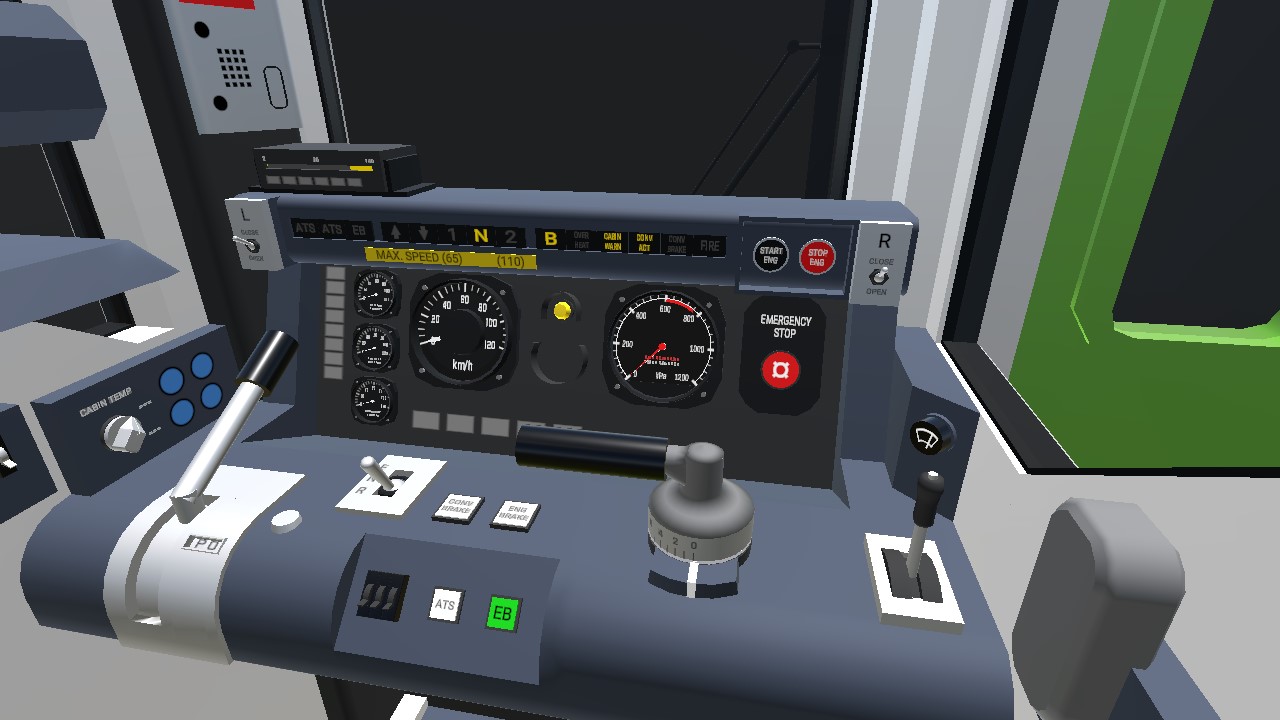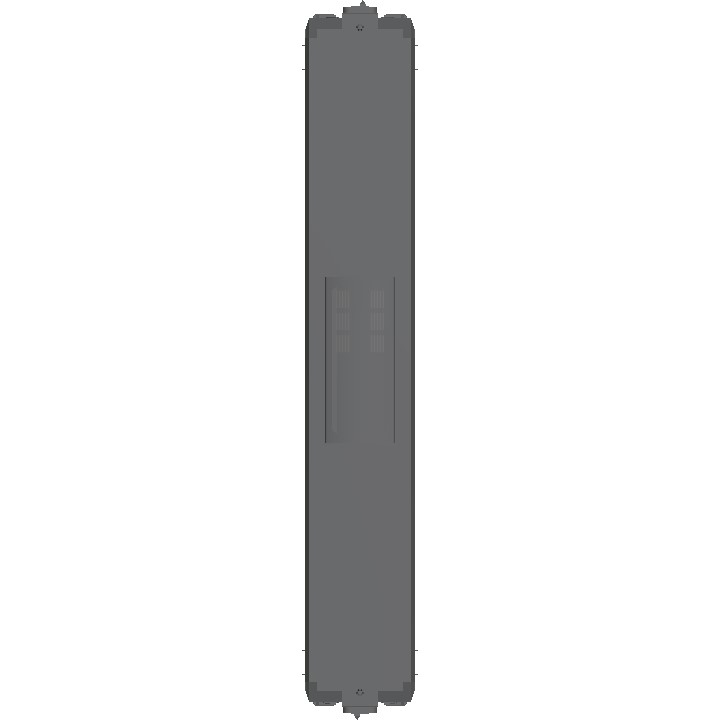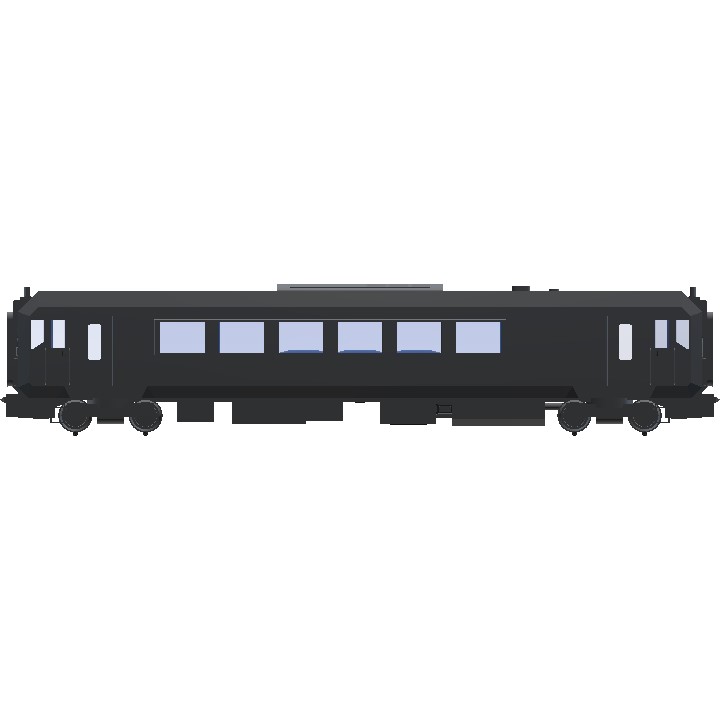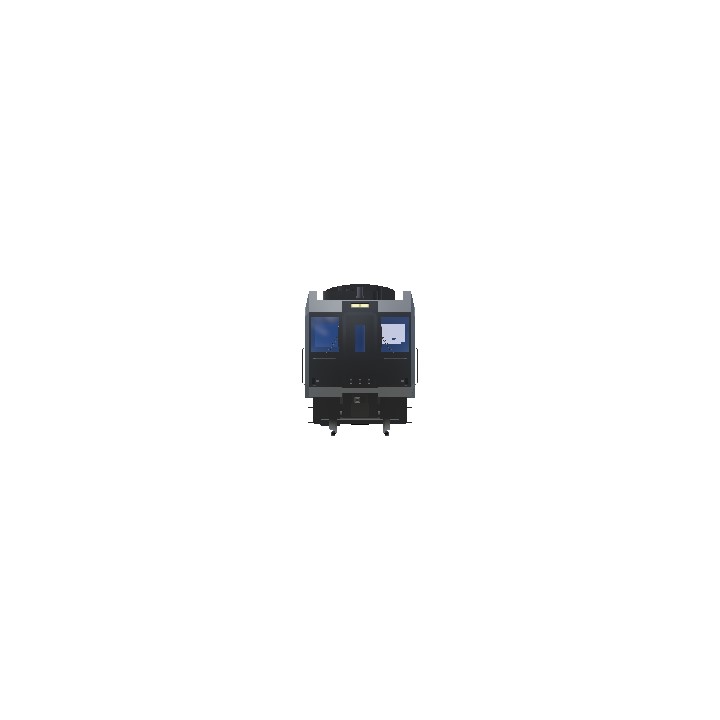Nippon Railways KiHa T100
Turbine multiple unit
Rank: III
USER MANUAL
CONTROLS
Yaw: Shift gears
VTOL UP: Brake
VTOL DOWN: Power
AG1: (none)
AG2: Engine brake
AG3: (none)
AG4: Wipers
AG5: Open left boarding doors
AG6: Open right boarding doors
AG7: Reverse light mode
AG8: (none)
DRIVING
Use VTOL as a master control lever for both power and brakes. Alternatively, separate power and brake levers are available in the cabin. There are 8 levels of power and brake application each, plus a cutoff position.
Start with P4 in 1st gear or P8 in 2nd gear. The speed limits are 65 km/h in 1st gear and 110 km/h in second gear. Operation completely in 2nd gear is possible and still fast under low loads.
The engine brake can provide deceleration at medium and high speeds when enabled. Normally, the clutch is disengaged when the throttle is cut. When using the engine brake, the clutch will not be disengaged, except at low RPMs.
The gear indicators ([1], [N], [2]) above the dashboard show the status of the transmission and may not reflect the chosen gear at times.
DOORS
Opening the doors:
Stop the train and apply brakes of B2 or greater to unlock the doors. If this is not done, the doors will remain closed.
Then, you can use the door switches to open the doors.
When the doors are open, power cannot be applied.
Closing the doors:
Use the door switches. You may apply power only after the doors are closed.
DEV NOTES
Funky train based on KiHa 100. Minor visual details have been changed. The post expands on the setting of the Second Jet Age.
There is a little bit of something like panelling (remember that old technique? *turns into dust*).
Since this is specifically intended to be a one-car post, I can put more parts into it. I originally made this to maybe enter the 500-parts VR challenge, but it won't happen.
Visual specific reference:
Control panel
Interior
Interesting sites of unknown reliability:
Private Sendai Transportation Heritage Museum (does not work on Chromium-based browsers)
==> how a DMU works
turbo train
INFORMATION
The KiHa T100 is a gas turbine multiple unit designed for use on rural railway lines.
While attempting to replace their prewar DMUs, gas turbines, which had suddenly increased in popularity, were tested by Nippon Railways East. Following the production of several prototype models, a small fleet of KiHa T100-0 series TMUs (turbine multiple units) were built to evaluate the feasibility of using gas turbines for revenue service.
The test run models used a compact powerplant and transmission designed by Yamashiro Heavy Industries. An engine with a maximum output of 600 PS was connected to a two-speed gearbox before a final connection to the drive bogie. Due to the available output, the KiHa 100 had an acceleration similar to EMUs when run by itself. Alternatively, it could be run with a passenger trailer for higher fuel efficiency.
The trial run found that with the efficiency and reliability brought about from recent technological advancements, new TMUs can now be made profitable enough to compete with prewar DMUs. However, TMUs have not proven to be superior to DMUs and BEMUs, and the three forms of train cars are forced to compete in a gradually shrinking market of non-electrified lines.
Information (KiHa T100-0 series):
Operator: Nippon Railways East
Manufacturing period: 2052-2054
Body construction: All stainless steel
Bogies: Bolsterless
Powerplant: Yamashiro Heavy Industries T/T02-600 (560 PS continuous output)
Acceleration: 3.1 km/h/s
Deceleration: 3.6 km/h/s (service), 4.6 km/h/s (emergency)
Maximum speed: 110 km/h
Length: 19,500 mm
Width: 2,980 mm
Height: 4,100 mm
Mass: 25.2-27.2 t
Specifications
General Characteristics
- Predecessor KiHaT100_dev2412111400
- Created On Android
- Wingspan 10.3ft (3.2m)
- Length 63.9ft (19.5m)
- Height 13.5ft (4.1m)
- Empty Weight N/A
- Loaded Weight 34,078lbs (15,457kg)
Performance
- Wing Loading N/A
- Wing Area 0.0ft2 (0.0m2)
- Drag Points 6812
Parts
- Number of Parts 958
- Control Surfaces 0
- Performance Cost 3,488




